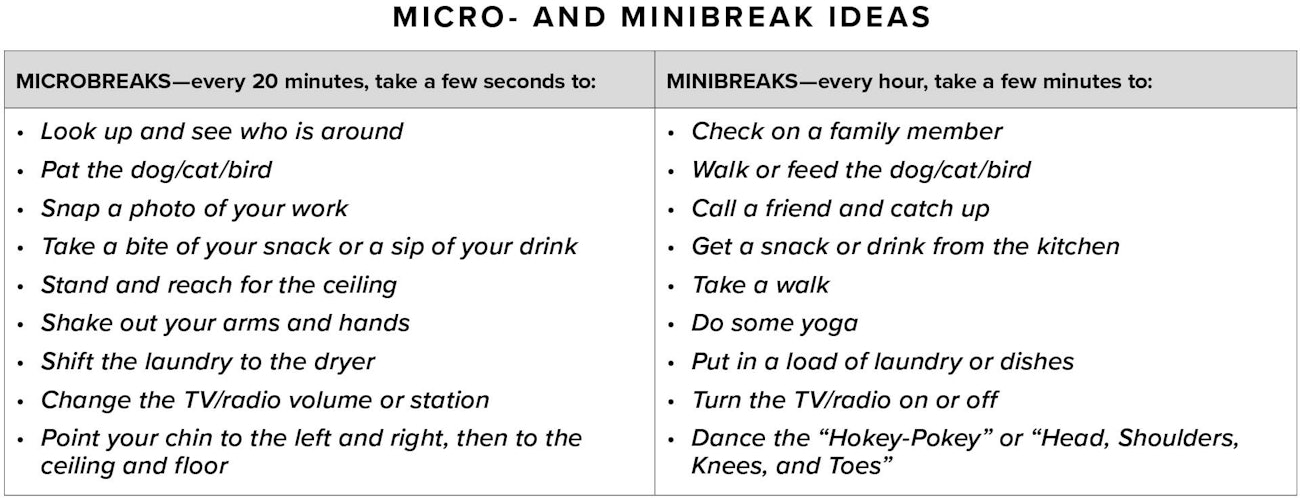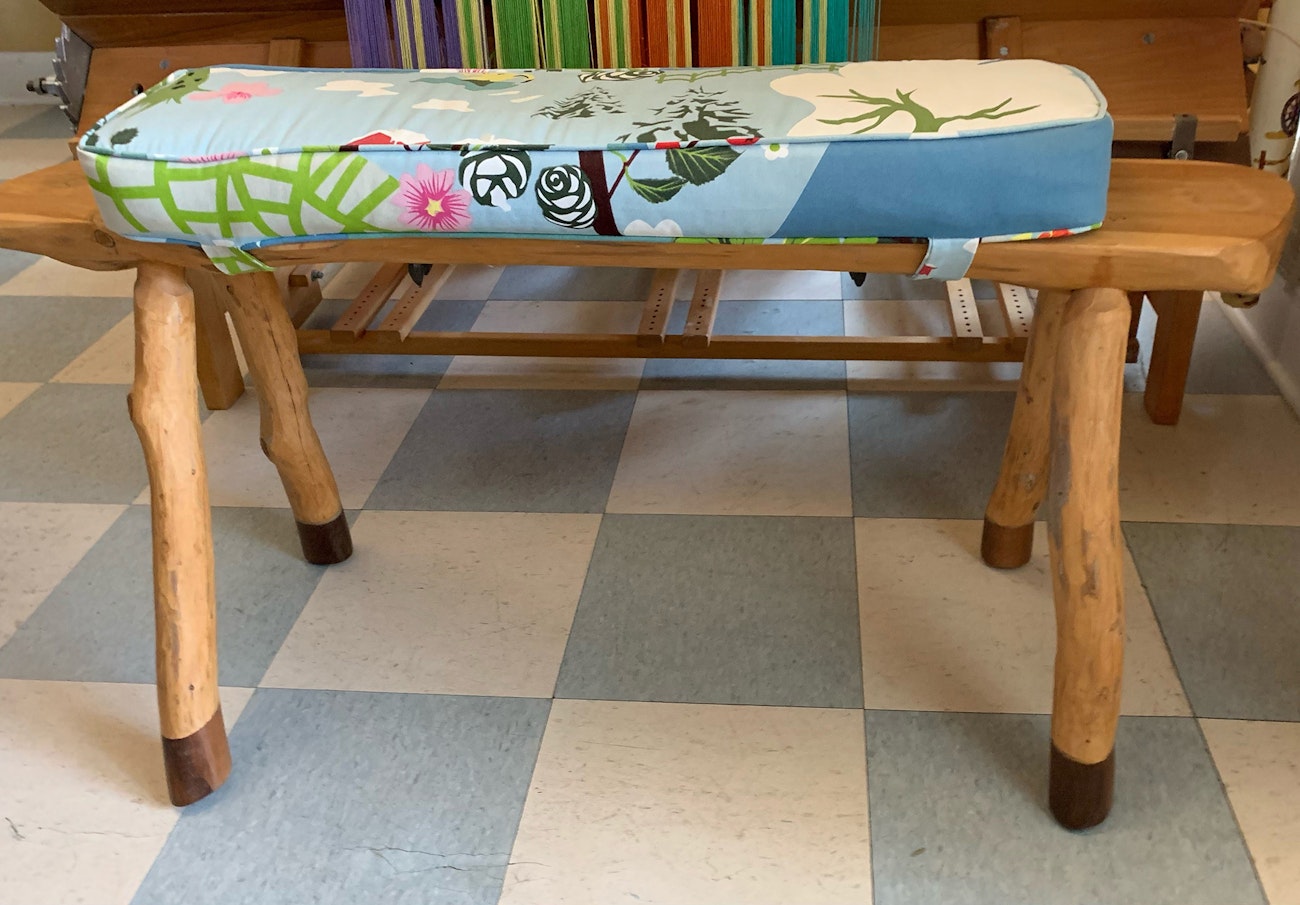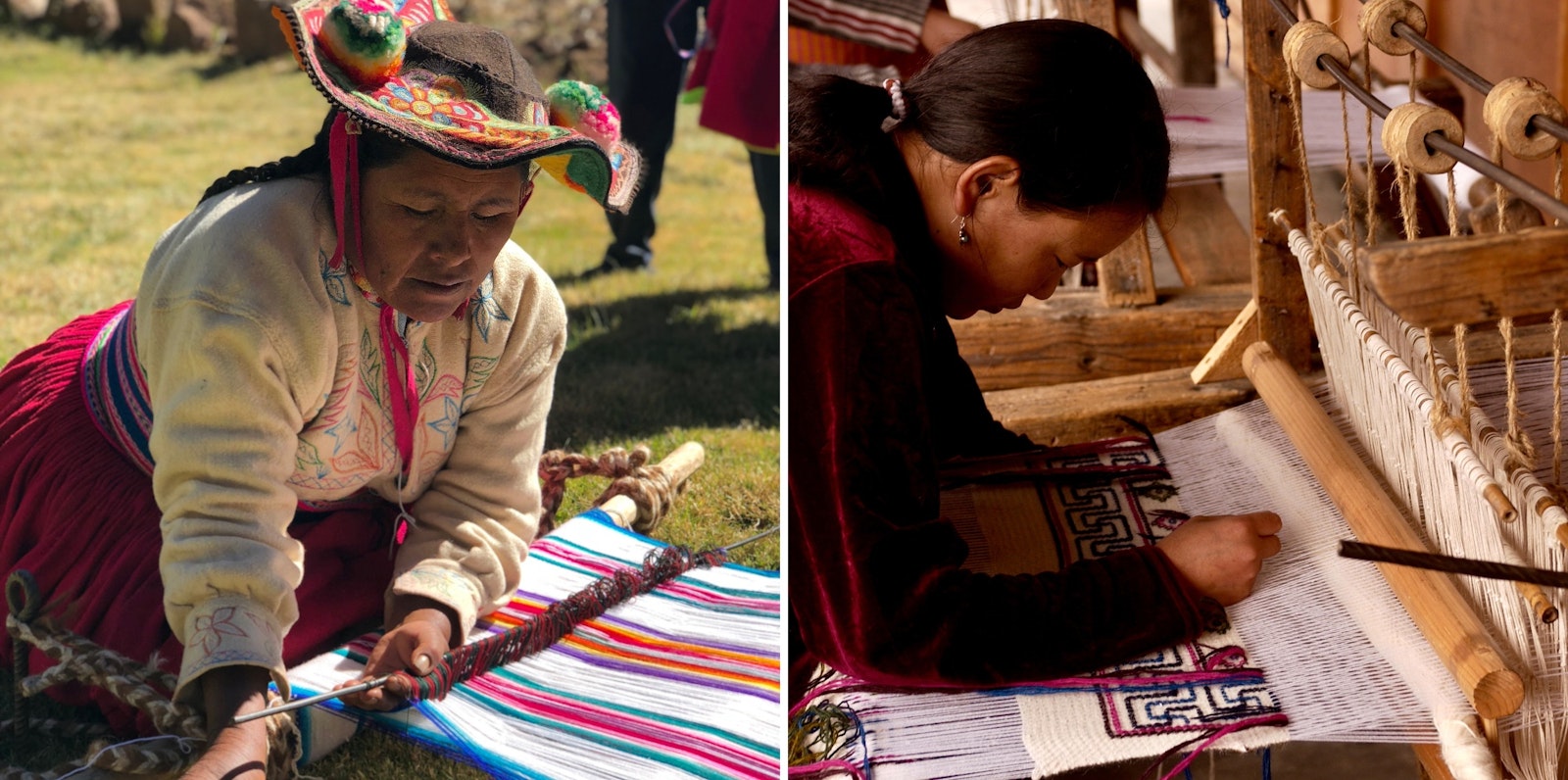As much as I love weaving, I know there have been times when it hasn't loved me. Here from our November/December 2022 issue is an article about weaving in ways that don't hurt your body. ~Susan
Remember the kid’s song “Head, Shoulders, Knees, and Toes”? Many of us have days when versions of that tune play in our minds as those little twinges remind us that our changing bodies could use a little help. An example of how weaving can impact our physical health is the story of our weaving friend Paola.
As a child, Paola learned to weave on a backstrap loom at the feet of her grandmother. Later in her life, when pregnant, she wanted to make baby blankets, so she learned to weave sitting at a floor loom. During the pandemic shutdown, with more time spent weaving, physical discomfort gradually began to invade and interrupt Paola’s weaving. Although a physician recommended giving her stiff and sore shoulders a break from her craft, Paola simply could not set it aside. Had she not found ways to ease her discomfort, Paola might have become discouraged to the point of giving up her treasured activity.
Let’s look at common issues that can create discomfort in a weaver’s body and some practical ways to address these challenges.
Causes of Discomfort
Seat height can contribute to comfort or discomfort from head to toe. Whatever you are sitting on while weaving should allow your feet to be firmly planted for stability and help you shift your weight when reaching or treadling. Sit high enough so your arms are in a relaxed position to do the work of both warping and weaving, which may require different seating heights. In general, the work itself should be at or slightly below the level of your elbows when your arms are relaxed at your side.
Reaching and bending can contribute to your degree of comfort, depending on the postures they create. It is a good practice to move out of sustained positions and stretch, so when the work itself creates this opportunity, accept it as a bonus. Keep in mind, however, that frequent repetitive bending or twisting beyond what is comfortable can lead to discomfort, which in turn interferes with weaving.
The size and structure of the weaving itself can also impact comfort levels. A wide warp demands more side-to-side reaching. A complex pattern may require stretching for more treadles and leaning over the work to pick up warp ends or manipulate weft. Thick or fuzzy fibers may require more forceful efforts to separate the sheds and beat in the weft. A detailed weave with delicate fibers may require you to draw in close for inspection, causing awkward postures, such as rounding the back or straining forward at the neck.
Commonsense Solutions
Commonsense solutions can address needed changes. Examples include minor adjustments for the weaver, the weaving, or the weaving place and tools. Weavers who experience sustained or severe discomfort should contact a health-care professional for advice beyond the general suggestions offered here.
An uncomfortable weaver should mind the body and change things up. As a first step to minding your body, take care of it. Get enough sleep, stay hydrated, and nourish it with healthy food. Consider that you are fueling your engine to do your best work. It is wonderful to experience flow while weaving, but when discomfort creeps in, it’s a warning that too much of a good thing can steal the joy. So pay attention to your body when it tells you it is tired or uncomfortable.
How can you change things up? Interrupt long periods of holding the same position, even if you are positioned ideally for weaving. A general rule of thumb is to take a seconds-long microbreak every 20 minutes or so and a minibreak for a few minutes every hour.

Another way to change things up is to multitask. Having more than one project in the works creates opportunities for you to physically move between weaving tasks. You can change from sitting at your loom to standing for another task. When warping a loom, you can alternate between threading heddles and pulling warp through the reed. When weaving, after completing a set of pattern repetitions, you can move on to winding a section of warp for your next project.
Tap Into Resources
People, places, and things can help you get past the discomfort that interferes with weaving. Consider these ideas as starting points for ways you can take care of yourself.
Put your smartphone to work
A photo or video can be a great way to troubleshoot weaving habits. It’s not easy to retrain or strengthen muscles—especially when you are focused on weaving, not on changing your habits. Most smartphones have a time-lapse setting that takes a long video and then plays it back in a 20- to 40-second time frame. Watching a video can help you see how your posture and movements change as you tire or sit at the loom for a long period of time. A video can also be shared with health-care providers or other weavers who can help problem solve any glitches in your weaving technique.
Try something different
Sometimes, the the problem that creates a weaving challenge is not a lack of resources, but is not being open-minded enough to try different things. For example, Tina had a weaving bench that was a perfect height to use at the dinner table, but it didn’t provide enough leverage for her to raise her loom’s heavy harnesses. When new cushions failed to raise the bench’s height, a furniture repairman stepped in to increase the length of its legs, as seen in the image at the top of the page.
Talk to suppliers
There is no substitute for trying out looms and equipment. Take advantage of opportunities to experiment with equipment in the presence of other weavers, and it’s even better if they have knowledge of how the human body works. Talking with others can give you the words and insights you need to develop your own best weaving technique.
Keep track
Once you have developed a plan, keep track of ideas you try and how well they work. This can involve using your phone’s camera, a comfort rating scale (0 = very comfortable to 5 = very uncomfortable), and a method for tracking your production time and quality such as leaving quick notes in your smartphone or on a calendar.

Changing the height of the weaving bench can lead to more comfortable and efficient weaving. In this case, a cushion didn’t bring the bench’s height up to a level that was appropriate for Tina, but adding wooden “hooves” did. Photo courtesy of Tina Fletcher
Averting potential problems by doing your best to prevent—rather than power through—discomfort will make you a more productive and happier weaver. Revisiting the tale of our friend Paola, her skills in both backstrap and floor-loom weaving have come in handy. When her body calls for a break in her weaving routine, Paola has been able to switch from one style of weaving to another. We can follow her example and answer the siren call of weaving by paying attention to our bodies, breaking up our routines, making small changes, and keeping track of what works.
Together, CYNTHIA EVETTS and TINA FLETCHER have accumulated 81 years of weaving, 76 years of occupational therapy practice, 45 years in higher education, and 18 years of friendship and shockingly similar interests.

